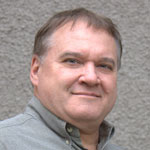Jim Kilberg is Plum Creek Timber’s senior vice president of real estate and land management. His responsibilities include development, recreational leasing, and conservation. Currently, one of his largest initiatives is spearheading a community collaboration project in central Florida, coordinating dialogue between local residents and community leaders in conservation, economic development, and education to create a comprehensive plan for the firm’s 65,000 acres in Alachua County. Plum Creek is a real-estate investment trust focused on the growing and harvesting of trees. One of the largest private landowners in the United States, with a market capitalization of $6.9 billion, Plum Creek owns over 6.4 million acres in 19 US states. Kilberg breaks down his story to show what it takes to oversee such an impressive project.
![]()
My most compelling task is the one before me. Alachua is a 30-plus year project, which is exhilaratingly complex. It’s a puzzle of how various constituencies can collaborate to produce an outcome in which many stakeholders benefit: community residents, local and regional economies, and conservationists.
To facilitate this collaboration, we held task force meetings, community workshops, and educational forums. We had no preconceived notion on what this could become. But what became clear is that the community wants to create jobs and opportunities, while conserving and protecting natural resources. Early in my career, I couldn’t have dreamed I would get to work in a sandbox of this magnitude.
Today, conservation funding in the United States is at critically low levels. Fewer federal dollars are devoted to conservation. We’ve reached a point that, for conservation to survive, it must find a way to work collaboratively with the development community. I firmly believe that through this type of collaboration, conservation, and development can come together to create wonderful outcomes.
There have been points in my career where I was given responsibilities I felt underequipped to perform. But to grow, you must take risks and accept intellectual challenges. You do your best and find out that you’re capable of growing into these challenges. You string a few such experiences together and one day discover that what you once feared becomes a strength, and you anxiously await your next unknown challenge.
What I’ve Learned
Rules for Success
From Jim Kilberg
1.
“Never burn a bridge—you never know when who you work with will become a window to your next opportunity.”
2.
“Integrity first, last, and always in your personal and professional life.”
3.
“Listening will always serve you better than speaking.”
I’ve been fortunate to work at companies with the fortitude to embrace change, and the vision to accept entrepreneurial spirit. Beginning with an IBM internship in 1977, I gained a strong background in marketing. My next employer, AT&T, paid for my MBA. This allowed me to secure a position with Trammell Crow Company (TCC), the nation’s largest commercial real-estate developer at the time. I learned much there from unbelievably talented people. But, due to the recession in the late ’80s when commercial real estate dried up, I learned my first hard lessons as we gave back a lot of properties to lenders and downsized our office from 125 people to 25 overnight. It was the first time I faced true professional adversity. One lesson learned at TCC was to be good to your people because consolidation necessitates painful change for you and those who work for you. Also, never burn a bridge. My relationships would almost magically aid me in the future.
This experience allowed me to form my own company, developing Publix grocery stores with an equity partner, but one of my former Crow relationships led me to my next opportunity.
A year later, with the economy still reeling, a friend and former associate at TCC introduced me to PepsiCo/Pizza Hut, which was looking for someone to manage Northeast US store development. My TCC tenant experience served me well in this significant leap to a more corporate, less entrepreneurial environment. And I learned two more bellwether lessons that I draw on every day. First, personal relationships based on listening are pivotal at every organizational level. The second was my introduction to outsourcing, not yet a formal business strategy, and how it can insulate firms from human-capital tragedies that accompany dramatic contraction.
Then, in 1995, I met executives from Pep Boys at a social function. As luck would have it, Pep Boys needed a vice president of national store development. During my tenure, the company went from opening 10 new stores a year to over 250. Such ambitious growth requires a lot of people. However, after my experience at PepsiCo, I built a department that was half in-house and half outsourced.
I hired over 100 people for Pep Boys in three years (including outsourced development and brokerage partners). But then, their stock saw a dramatic slide. Overnight I had to let almost everyone go. I felt personally responsible for these people and used my network of recruiters from my Pizza Hut days to help them find new positions. Little did I know how quickly that good karma would be returned, because I was also looking for a way out.
A former Pep Boys associate coincidentally was in the office of the new president of National Retail with TCC and mentioned my name in passing. This led to my virtually immediate return to Crow as their EVP of national retail services. By this time, TCC was enthusiastically outsourcing, an area in which I had significant experience. It wasn’t long before I was promoted and moved back to the South, as a central figure in TCC’s Global Outsourcing Services business.
Five years later, another Crow counterpart went to work for Plum Creek, to start up their real-estate program. Plum Creek was trying to develop a strategy to understand the best value and outcomes for its portfolio, and build an organization to execute that strategy. Within those rural timber assets, there was significant potential for “alternative value.” The sum of all my experiences led me to this new challenge in a totally different and exciting arena, and I enthusiastically accepted [Plum Creek’s] executive offer in 2003.
A master plan is emerging for this large development in Florida. We can’t assume anything when working in a community with various—and sometimes competing—interests to create a new comprehensive plan. We must listen with an open mind. Gainesville has become a “brain hub” city, with highly valued intellectual capital available for collaboration. To help the Plum Creek master-planning process, we’ve engaged big thinkers.
Any development over 15,000 acres requires both a sector plan and a DSAP [detailed specific area plan]. The entire parcel is currently zoned for agriculture and timber. Legally we are permitted to divide it all up and sell in small parcels. But Plum Creek considers long term stewardship and the interests of the community where we will continue to live and work well into the future.
How do you show the public that something is happening other than just talk and planning? And most importantly, how do you produce true economic development for a community, and maintain perpetual respect for the environment? We’re identifying these answers together with complete transparency, as we all work to create a new economic development paradigm. ![]()

